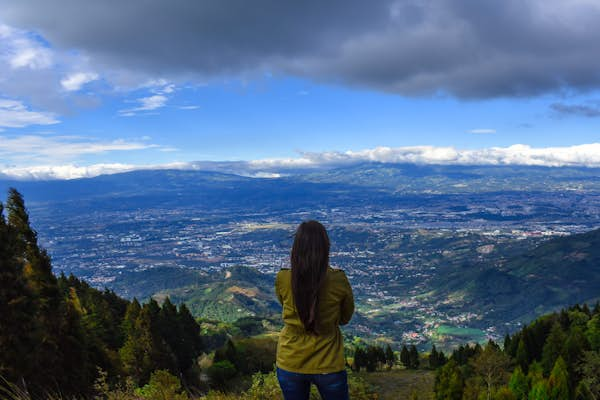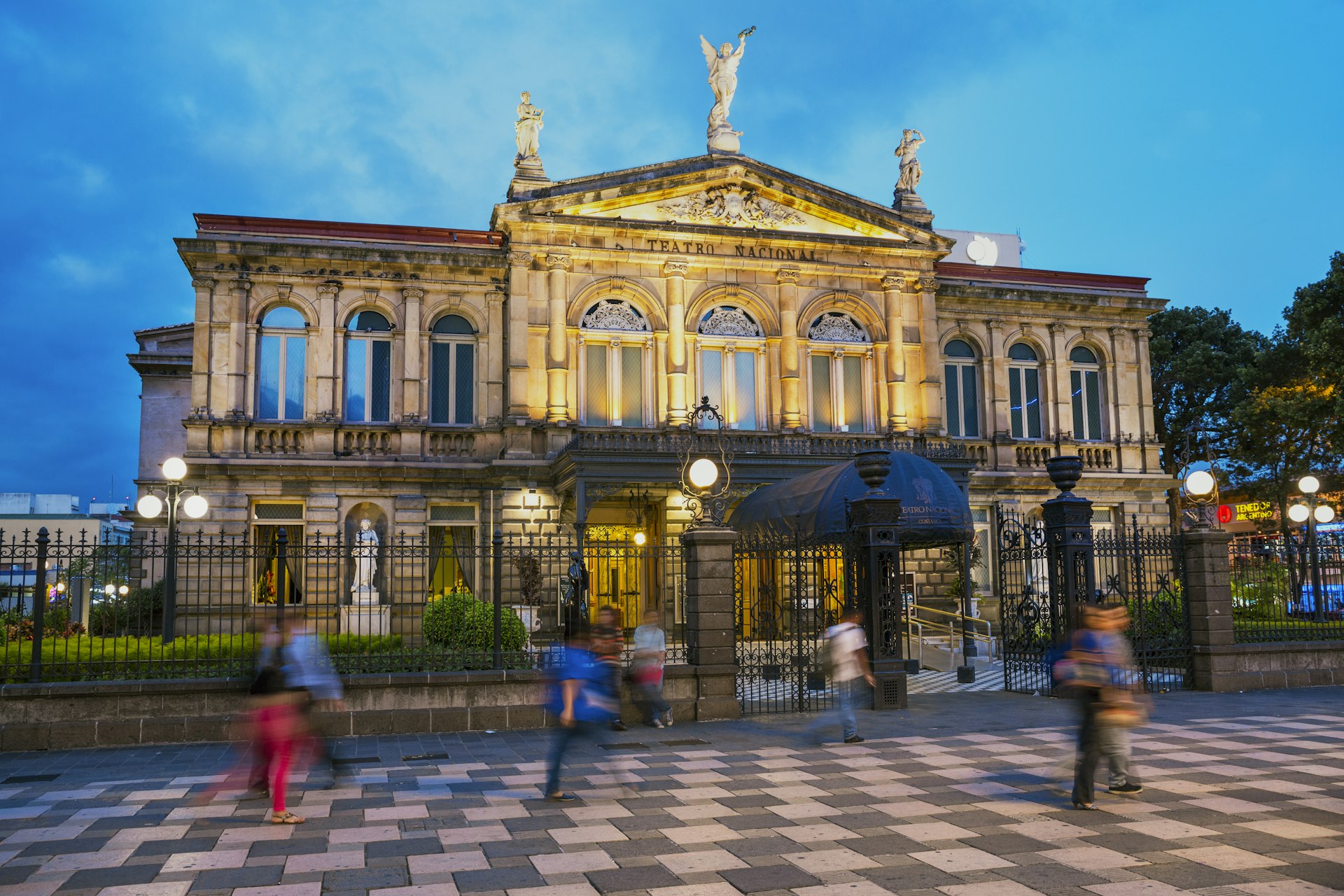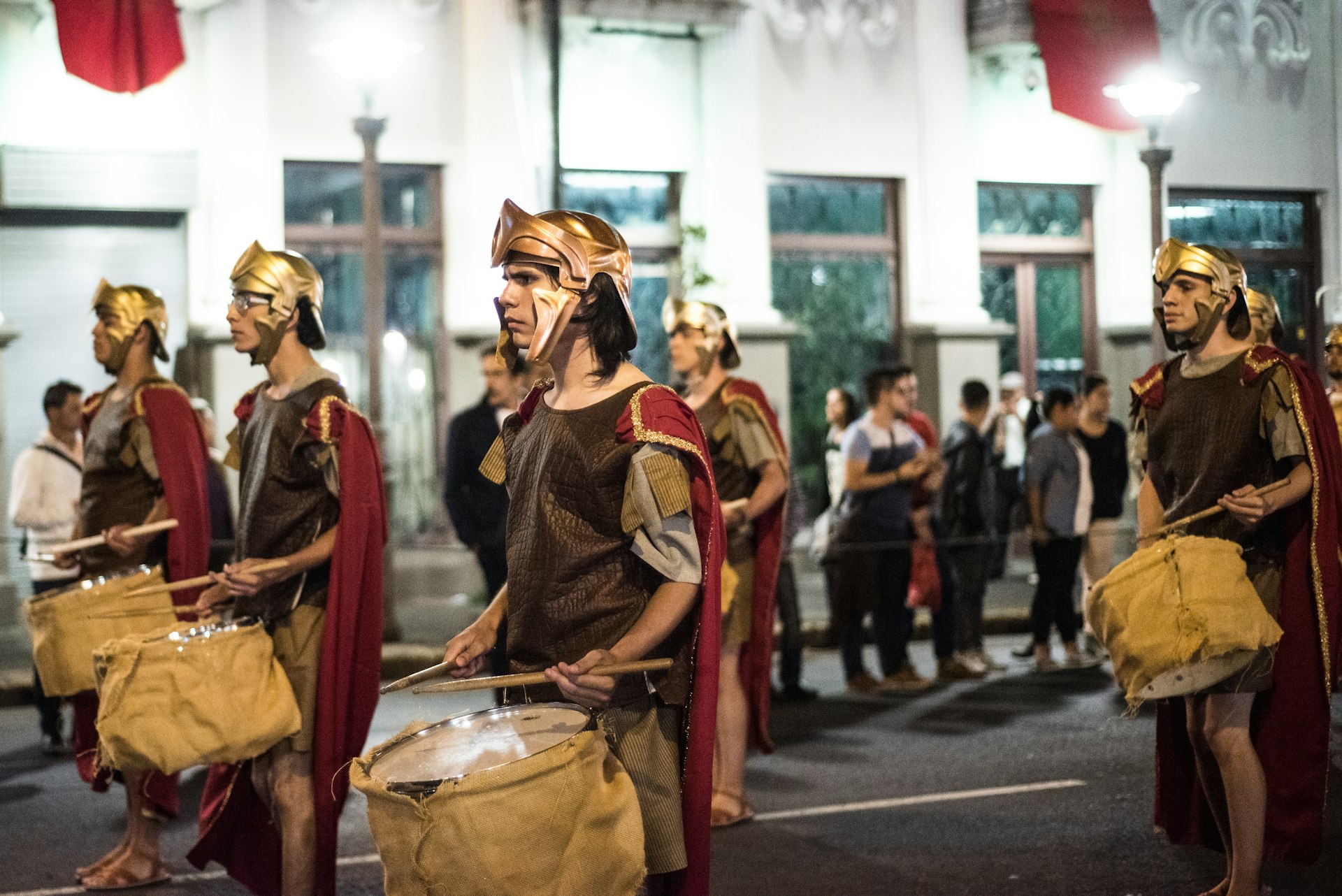
San José and the Central Valley of Costa Rica have some of the most pleasant weather in the world, with average daily temperatures of 24–28ºC (75–82ºF).
Days can be warm and nights cool, but the mercury stays consistent every month of the year. The climate is so accommodating that josefinos tend to get spoiled, complaining about the slightest shift in degrees. There are wetter months too, so if you travel May through November, you should expect some rain.
So what is the best time to visit San José and its environs? That depends on your budget and what you’re looking for. Rain usually means shorter lines and cheaper rooms, but it’s hard to turn down sunshine. Meanwhile, San José is known for several major holidays that can be a treat to attend. No matter what the season, travelers tend to savor this magical mix of high elevation and warm temperatures. Choose the best time for your visit to San José with this guide to what’s happening through the year.
Make the most out of every adventure with help from our weekly newsletter delivered to your inbox.  Nights are a bit cooler, but the temperature doesn’t vary much through the year in San José © Gonzalo Azumendi / Getty Images
Nights are a bit cooler, but the temperature doesn’t vary much through the year in San José © Gonzalo Azumendi / Getty Images
December to January is the best time for holiday celebrations
The Central Valley gets the same Christmas gift every year: the end of the rainy season and lots of paid time off. The traditional Navidad has become increasingly commercial in recent years, with synthetic fir trees popping up across San José. This culminates in the Festival de la Luz, a light-encrusted parade around La Sabana. Attendants are treated to colorful floats and rollerbladers dressed as Santa’s elves.
The party continues at the Fiestas de Zapote, a massive urban carnival in the usually quiet neighborhood of Zapote. Tents and carnival games rise out of the streets, along with gravity-defying rides and beer stalls. The Fiestas take place at the end of December, helping celebrants ring in the New Year.
In January, head up to the humble town of Palmares, which hosts an annual “Tope,” or horse parade. More than just an equestrian showcase, the Fiestas Palmares host massive concerts and hundreds of dining options, making it one of the anticipated festivals in Costa Rica.
January to April is the sunniest season
The dry season brings opal-blue skies, and you’ll rarely feel so much as a raindrop during the first months of the year. This is a busy time in the Central Valley, as travelers pour through Juan Santamaría Airport to begin their Costa Rican journey. Most of these people are bound for the beaches and mountains, but San José is a natural starting point.
The dry weather is perfect for driving, evening excursions and dipping in outdoor pools. It’s easier to air-dry your laundry and there aren’t any puddles to dodge. In general, you don’t have to plan your days as carefully, because the weather is warm and dry at any hour of the day or night. That said, make sure to protect yourself from the powerful sun.
The streets are busiest during this time, and you can expect higher rates at hotels and bigger crowds at museums. The foliage tends to wilt in March and April, as the parched scenery loses its emerald luster. It’s also no secret that San José has a litter problem, and without storms to wash away the rubbish, the downtown area can get unpleasantly aromatic.
 Watch religious processions in San José during Easter week © Irene Castillo Sanchez / Shutterstock
Watch religious processions in San José during Easter week © Irene Castillo Sanchez / Shutterstock
April and August are the best months for religious observance
Costa Rica has an official “state religion,” and the nation’s Catholicism is felt most strongly during Holy Week. Shops and restaurants close, road traffic thins out, and most neighborhoods go quiet. This can be a challenging time to visit, as many services will be delayed or unavailable.
However, April also promises the procesiones, a dramatic reenactment of the Passion story, which unfolds in the streets of San José and spotlights local actors. Roman soldiers march through the city, and a replica of Jesus Christ is “crucified” in front of the Catedral Metropolitana. It’s a memorable way to commemorate Good Friday, followed by Sunday’s Easter celebration.
Another hallowed ritual takes place in early August, with the annual romería. Thousands of pilgrims walk from San José to the city of Cartago in honor of “La Negrita,” a black stone sculpture of the Virgin Mary that is considered the patron saint of Costa Rica. Highways are shut down to accommodate the legions of devotees who make the 22km (14 mile) journey on foot to the Basilica de Nuestra Señora in downtown Cartago.
May through November are the greenest months (and most budget-friendly)
The Costa Rican government cleverly rebranded “the rainy season” as “the green season,” but the peppy name is more than a marketing ploy: the Central Valley really is more verdant in the wetter months. Just as more moisture rejuvenates the landscape, the crowds disperse, and accommodations get cheaper. For many, the second half of the year is the preferred time to visit.
First-timers often expect the downpour to start in May and then dump continuously for the next six months. But Central Valley weather patterns are more forgiving than that. Mornings are almost always sunny, with clouds accumulating around noon. Rain typically falls in the early afternoon and could continue through the night, but its length and severity vary a great deal. Some evenings you get raging thunderstorms; others, a refreshing shower.
Throughout the green season, plan your outdoor activities for the mornings, and if the rain doesn’t fall (as is often the case), consider it a gift. You’re also wise to pack an umbrella with you; ponchos and raincoats are useless against tropical storms, especially when the wind is up.


